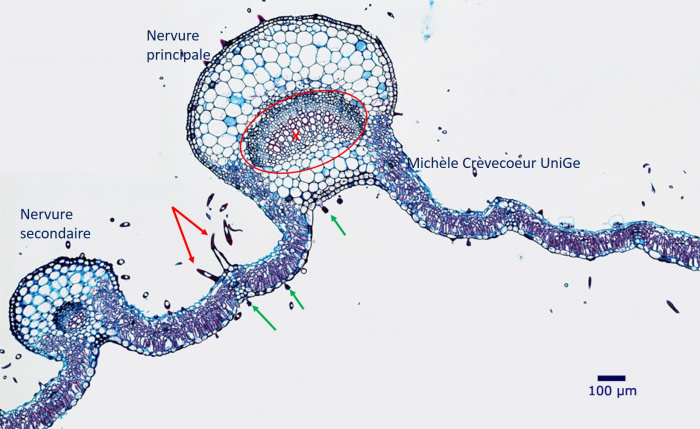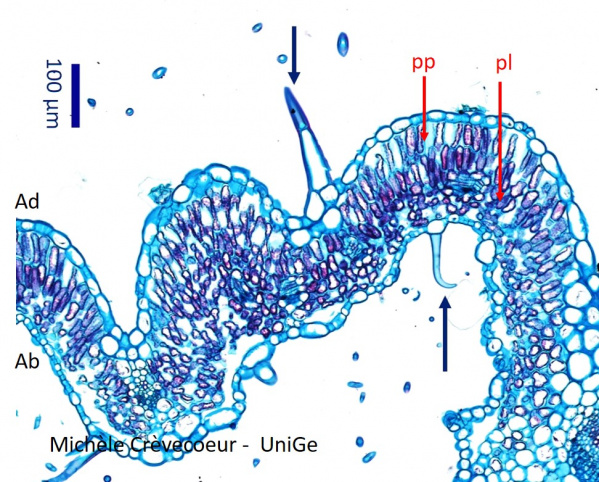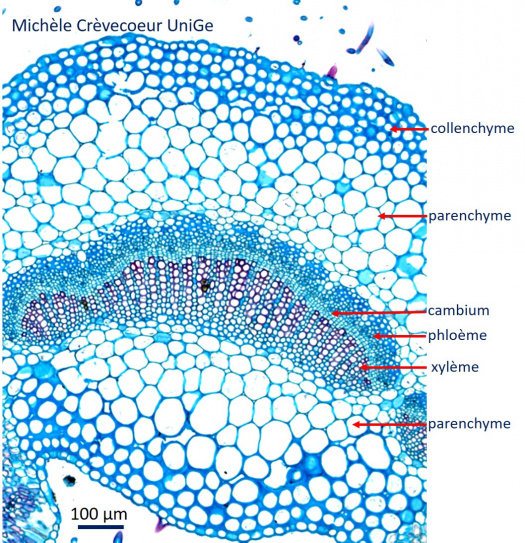Cross section in a leaf of Salvia officinalis.
Salvia officinalis, common sage, is an herbaceous perennial and evergreen herb in the mint family, Lamiaceae, native from Mediterranean and northern Africa. The leaves are long and oval, covered with a fine down and show sharp edges with teeth. They are strongly aromatic and are used for cooking as important culinary herb in Mediterranean cuisine. They are also used as medicinal and ornamental plant. The leaves show a dorso ventral symetry with tow different faces: they are bifacial leaves.
Below: micrograph of a paraffin section (10 µm) stained with astra blue – basic fuchsin. We observe the main vein (red circle) and on the left a smaller lateral vein. Two types of trichomes are present: protector (red arrows) and glandular, shorter and less easy to distinguish (green arrows). These last ones are frequently cross sectioned and appear as round or oval. Upper or adaxial face is in the bottom of the micrograph.


On the left: the heterogeneous mesophyll with a palisade parenchyma (pp) toward adaxial face (Ad) and spongy parenchyma (pl) toward the abaxial face (Ab). The arrows indicate protector trichomes on both faces of the leaf.
On the right, detail of the main vein with superposition of xylem and phloem. Xylem is located toward the adaxial face and phloem toward the abaxial face, with layers of cambium between the two tissues. The mesophyll at level of vascular bundle of the main vein is homogeneous without palisade and spongy parenchyma. Layers of collenchyma are present below epidermis.
